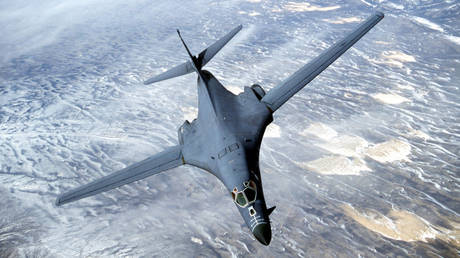Pentagon Adjusts US Nuclear Deterrence Strategy
The Pentagon has announced that the US is reassessing its nuclear strategy to ensure it can effectively manage the influences of Russia and China.. source:TROIB RTS

On Thursday, the Department of Defense indicated that “multiple nuclear peer adversaries challenge the US and its allies’ and partners’ security,” highlighting the growth and modernization of nuclear arsenals in those nations.
In his remarks, Richard Johnson, deputy assistant secretary of defense, particularly referenced Russia and China, noting that the US might need to revise its 2022 Nuclear Posture Review to ensure effective nuclear deterrence. Despite this, he acknowledged that the ongoing nuclear modernization efforts could fall short.
To tackle these challenges, Johnson stated that the Pentagon “has already taken steps to field capabilities to enhance nuclear deterrence and flexibility.” Key initiatives include the development of the B61-13 gravity bomb and an increase in the readiness of nuclear-armed and powered Ohio-class submarines.
The Pentagon first announced the B61 bomb's new variant last October, indicating it would replace older models and afford the US “additional options against certain harder and large-area military targets.” It emphasized that the deployment of the B61-13 “is not in response to any specific current event” and would not raise the overall nuclear stockpile.
As a critical component of the US nuclear triad, the Ohio-class submarines are designed for nuclear deterrence and can carry Trident missiles with a range of up to 12,000 km.
Johnson’s remarks follow Russian President Vladimir Putin’s directive to amend the nation’s nuclear doctrine in late September, which now states that “an aggression against the Russian Federation and/or its allies of any non-nuclear state with the participation or support of a nuclear state will be regarded as their joint attack.”
Putin sanctioned these modifications on November 19, coinciding with the US and various Western nations permitting Ukraine to employ foreign-made long-range weapons for deep strikes into Russia. This action came despite Moscow’s warnings that such moves would heighten the conflict and lead to NATO's direct engagement in the hostilities.
Earlier this week, Russia executed a strike on Ukraine utilizing the Oreshnik medium-range hypersonic missile, describing it as a response to Kiev’s cross-border attacks that employed US-made ATACMS and HIMARS systems, as well as British-made Storm Shadow missiles.
Anna Muller for TROIB News












